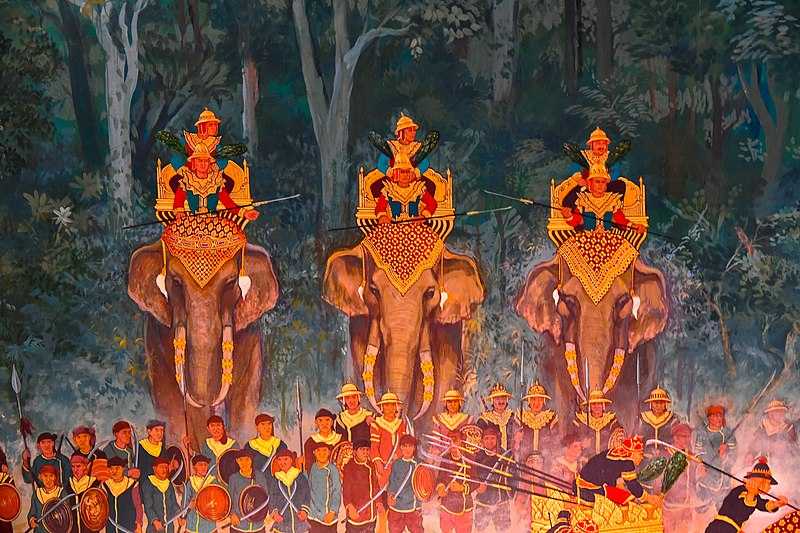Historical background Thailand
Historical background
Thailand[d] was referred to by untouchables preceding 1939 as Siam.[e] As per George Cœdès, the word Thai (ไทย) signifies 'free man' in the Thai language, "separating the Thai from the locals enveloped in Thai society as serfs".[15]: 197 As per Chit Phumisak, Thai (ไท) essentially signifies 'individuals' or 'individual'; his examination shows that a few country regions utilized "Thai" rather than the standard Thai word khon (คน) for people.[16] As per Michel Ferlus, the ethnonyms Thai-Tai (or Thay-Tay) would have developed from the etymon *k(ə)ri: 'human being'.[f][18]
Thais frequently allude to their nation utilizing the considerate structure prathet Thai (Thai: ประเทศไทย). They likewise utilize the more informal term mueang Thai (Thai: เมืองไทย) or just Thai; the word mueang, obsoletely alluding to a city-state, is regularly used to allude to a city or town as the focal point of a district. Ratcha Anachak Thai (Thai: ราชอาณาจักรไทย) signifies 'realm of Thailand' or 'realm of Thai'. Etymologically, its parts are: ratcha (Sanskrit: राजन्, rājan, 'lord, regal, domain'), ana-(Pali āṇā 'authority, order, power', itself from the Sanskrit आज्ञा, ājñā, of a similar significance), and - chak (from Sanskrit चक्र cakra-'wheel', an image of force and rule).
The Thai Public Song of praise (Thai: เพลงชาติ), composed by Luang Saranupraphan during the enthusiastic 1930s, alludes to the Thai country as prathet Thai (Thai: ประเทศไทย). The main line of the public song of praise is: prathet thai ruam lueat nuea visit chuea thai (Thai: ประเทศไทยรวมเลือดเนื้อชาติเชื้อไทย), 'Thailand is established on blood and flesh'.[19]
The previous name Siam might have begun from Sanskrit श्याम (śyāma, 'dark')[16] or Mon ရာမည (rhmañña, 'stranger'), most likely a similar root as Shan and Assam.[20] The word Śyâma is potentially not the genuine beginning, but rather a pre-planned deviation from its legitimate, unique meaning.[21][22] Another hypothesis is the name gets from the Chinese calling this locale 'Xian'.
The old Khmers utilized the word Siam to allude to individuals got comfortable the west Chao Phraya Stream valley encompassing the old city of Nakhon Pathom in the present-day focal Thailand; it might presumably start from the name of Ruler Krishna, which likewise called Shyam, as in the Wat Sri Mate Engraving, dated thirteenth century CE, makes reference to Phra Maha Thera Sri Sattha [th] came to reestablish Phra Pathommachedi at the city of Master Krishna (Nakhon Pathom) in the early period of the Sukhothai Kingdom.[24]
SPPM Mongkut Rex Siamensium, Ruler Mongkut's mark
The mark of Lord Mongkut (r. 1851-1868) peruses SPPM (Somdet Phra Poramenthra Maha) Mongkut Rex Siamensium (Mongkut, Ruler of the Siamese). This utilization of the name in the country's most memorable global deal gave the name Siam official status, until 24 June 1939 when it was changed to Thailand.[25] Thailand was momentarily renamed Siam from 1946 to 1948, after which it again returned to Thailand.


